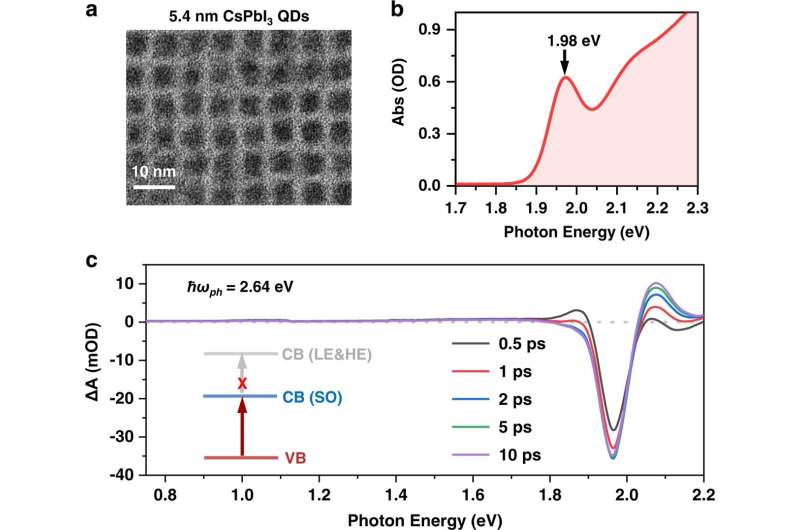Researchers observe excitonic Bloch-Siegert shift in quantum dots

A research group led by Prof. Wu Kaifeng and Zhu Jingyi from the Dalian Institute of Chemical �鶹��Ժics of the Chinese Academy of Sciences recently reported the observation of an excitonic Bloch-Siegert shift in CsPbI3 perovskite quantum dots (QDs), which advances current fundamental understanding for coherent light-matter interaction in low-dimensional solid-state materials.
The study was published in Nature Communications on Sept. 22.
Coherent interaction between a two-level system and a periodic light field contains both co- and counter-rotating wave parts, which correspond to the so-called optical Stark effect and Bloch-Siegert shift, respectively. Observing the latter has always been challenging, not only because it is weak but it is often accompanied by a much stronger Stark shift.
In this study, the researchers reported a strong excitonic Bloch-Siegert shift in CsPbI3 perovskite QDs at room temperature. The band structure and spin-orbit coupling of this material led to spin-selective quasi-particle transition rules, analogous to the valley-selectivity in transition metal dichalcogenides (TMDs), thus offering a new playground to test excitonic effects on the optical Stark effect and Bloch-Siegert shift.
Importantly, unlike TMDs whose excitonic interaction depended sensitively on their underlying substrates, potentially responsible for the disparity in the above-mentioned studies of TMDs, the excitonic interaction in these colloidal QDs was deterministically strong, as they were uniformly surrounded by low-refractive-index organic ligands and solvents.
The researchers found that by controlling the light helicity, they could largely restrict the optical Stark effect and Bloch-Siegert shift to different spin-transitions, especially when the pump light was tuned from visible to infrared, achieving a Bloch-Siegert shift as strong as four meV.
The ratio between the Bloch-Siegert and optical Stark shifts was found to be systematically higher than the one predicted by the quasi-particle picture at 12 different pump wavelengths. By accounting for the co- and counter-rotating Floquet states of ground, exciton, and biexciton states, they quantitatively reproduced the experimental observations with a biexciton binding energy of 65 meV.
"Our new model depicts a unified physical picture of the interplay between the optical Stark effect, biexcitonic optical Stark effect and Bloch-Siegert shift in low-dimensional materials displaying strong many-body interactions," said Prof. Wu.
More information: Yuxuan Li et al, Excitonic Bloch–Siegert shift in CsPbI3 perovskite quantum dots, Nature Communications (2022).
Journal information: Nature Communications
Provided by Chinese Academy of Sciences


















